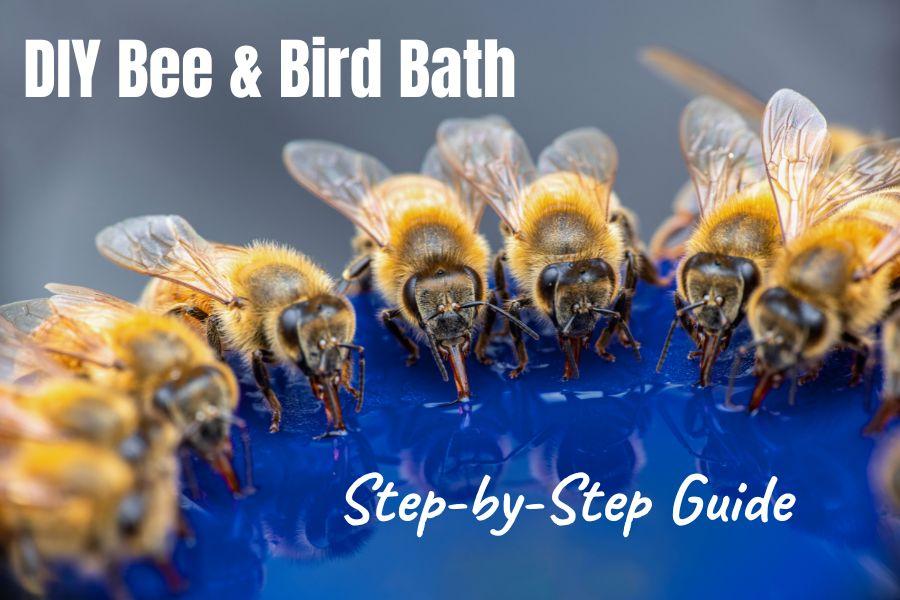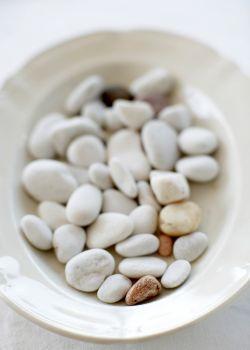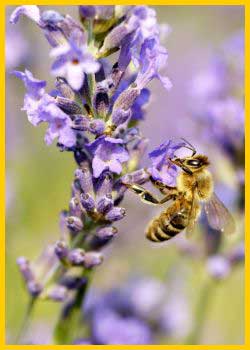A thriving garden can attract a wide variety of birds as well as bees. You can easily create a bee-loving and pollinator-friendly garden with a homemade bath for both birds and bees.

Below, I show you the what, why and how of crafting a garden bath for bees and birds. Plus, I share a list of bee-attracting perennials and shrubs that will make your yard even more appealing to these pollinators.
What Exactly is a Bee Bird Bath?
This garden-friendly wildlife bath provides hydration to bees while also attracting birds to your garden. While it brings in many species, it also includes a bee-friendly area that prevents them from drowning in too-deep water
Note: Bee/bird baths are larger than bee watering stations, which are designed to attract bees exclusively. Although, watering basins are conveniently small and compact, they tend to run dry quickly for that reason.
A larger bee-bird bath can accommodate more critters, plus hold more water. Hence, it doesn’t need refilling as often.

Materials You Need for Your Garden Watering Hole:
Creating abath for bees is refreshingly simple and requires minimal basic materials:
- 1. Native Plants
- 2. Shallow Waterproof Containers
- 3. Natural Decor
- 4. Fresh Water
Step-by-Step Guide to Make a Bee Bath:
| Step | Instructions |
|---|---|
| 1 | Select native perennials and shrubs suited for your region (See below). |
| 2 | Place shallow containers (ie. saucers) amidst the plants. I recommend lighter colors (not black) so the water stays cooler. |
| 3 | Arrange small stones and/or pebbles in and around the containers. |
| 4 | Fill the basins with fresh water, verifying that the decorative elements rise above the water surface. |
| 5 | Position the bath in a sunny, safe location in your garden. |
| 6 | Monitor and refill the water regularly and add water clarifier if you notice water getting cloudy or green. |
Bee-Attracting Perennials and Shrubs:

Make your yard more attractive to bees by incorporating these bee-attracting perennials and shrubs:
- Lavender: Attracts bees with its fragrant, purple blooms and is drought-resistant, thriving in full sun and well-draining soil.
- Coneflower (Echinacea): Offers vibrant blooms and serves as a rich food source for bees. It is hardy, adaptable to various climates, and prefers full sun.
- Sage (Salvia): Various types attract bees with their long-lasting flowers. Sage grows best in full sun and well-drained soil, offering aromatic leaves useful in cooking.
- Butterfly Bush (Buddleja): Attracts bees with its large, nectar-rich flower clusters. It requires full sun, well-drained soil, and suits more spacious garden areas.
In Conclusion:
Crafting a bee bird bath for your pollinator-friendly garden is an excellent way to foster a thriving ecosystem. By providing a space that caters to both local insects and birds, you’re nurturing a harmonious environment that benefits everyone involved.
Last Updated April 26, 2024

